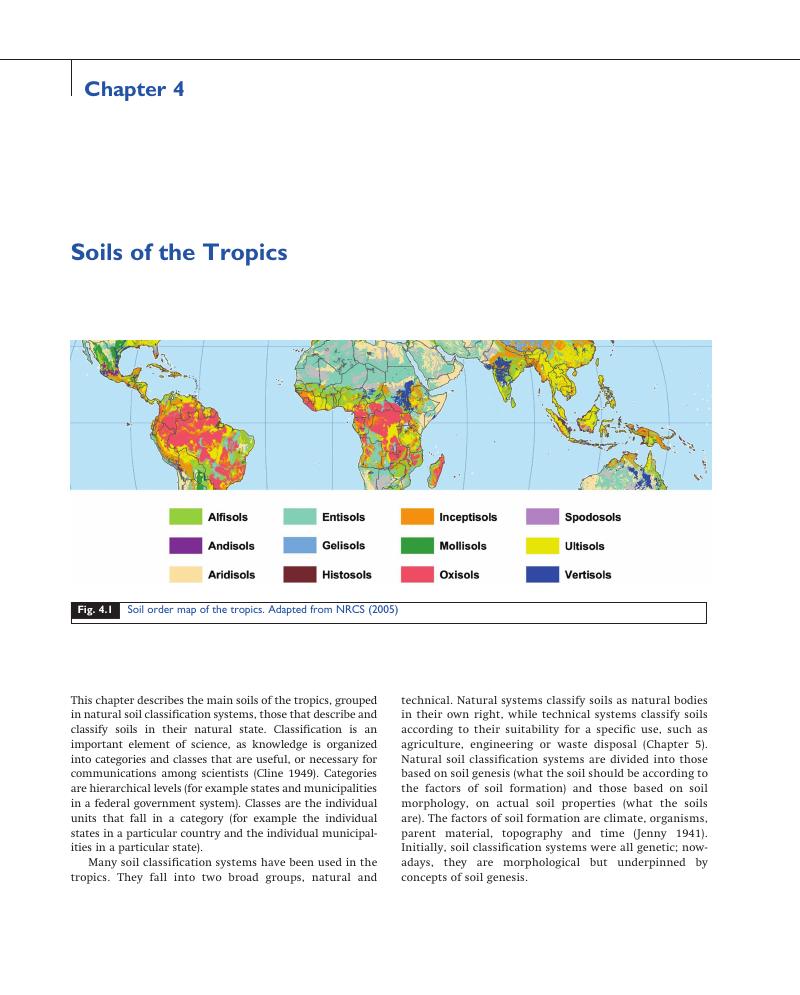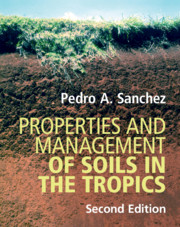Book contents
- Properties and Management of Soils in the Tropics
- Reviews
- Properties and Management of Soils in the Tropics
- Copyright page
- Dedication
- Table of Contents
- Foreword
- Preface
- Acknowledgments
- Part I The Tropical Environment
- Part II Pedology, Physics, Chemistry and Biology
- Chapter 3 History of Soil Science in the Tropics
- Chapter 4 Soils of the Tropics
- Chapter 5 Functional Capability Classification
- Chapter 6 Soil Physical Properties
- Chapter 7 Water
- Chapter 8 Mineralogy
- Chapter 9 Soil Acidity
- Chapter 10 Soil Biology
- Chapter 11 Organic Carbon
- Part III Soil Fertility
- Part IV Management Systems
- Index
- References
Chapter 4 - Soils of the Tropics
from Part II - Pedology, Physics, Chemistry and Biology
Published online by Cambridge University Press: 09 January 2019
- Properties and Management of Soils in the Tropics
- Reviews
- Properties and Management of Soils in the Tropics
- Copyright page
- Dedication
- Table of Contents
- Foreword
- Preface
- Acknowledgments
- Part I The Tropical Environment
- Part II Pedology, Physics, Chemistry and Biology
- Chapter 3 History of Soil Science in the Tropics
- Chapter 4 Soils of the Tropics
- Chapter 5 Functional Capability Classification
- Chapter 6 Soil Physical Properties
- Chapter 7 Water
- Chapter 8 Mineralogy
- Chapter 9 Soil Acidity
- Chapter 10 Soil Biology
- Chapter 11 Organic Carbon
- Part III Soil Fertility
- Part IV Management Systems
- Index
- References
Summary

- Type
- Chapter
- Information
- Properties and Management of Soils in the Tropics , pp. 82 - 119Publisher: Cambridge University PressPrint publication year: 2019
References
- 1
- Cited by



